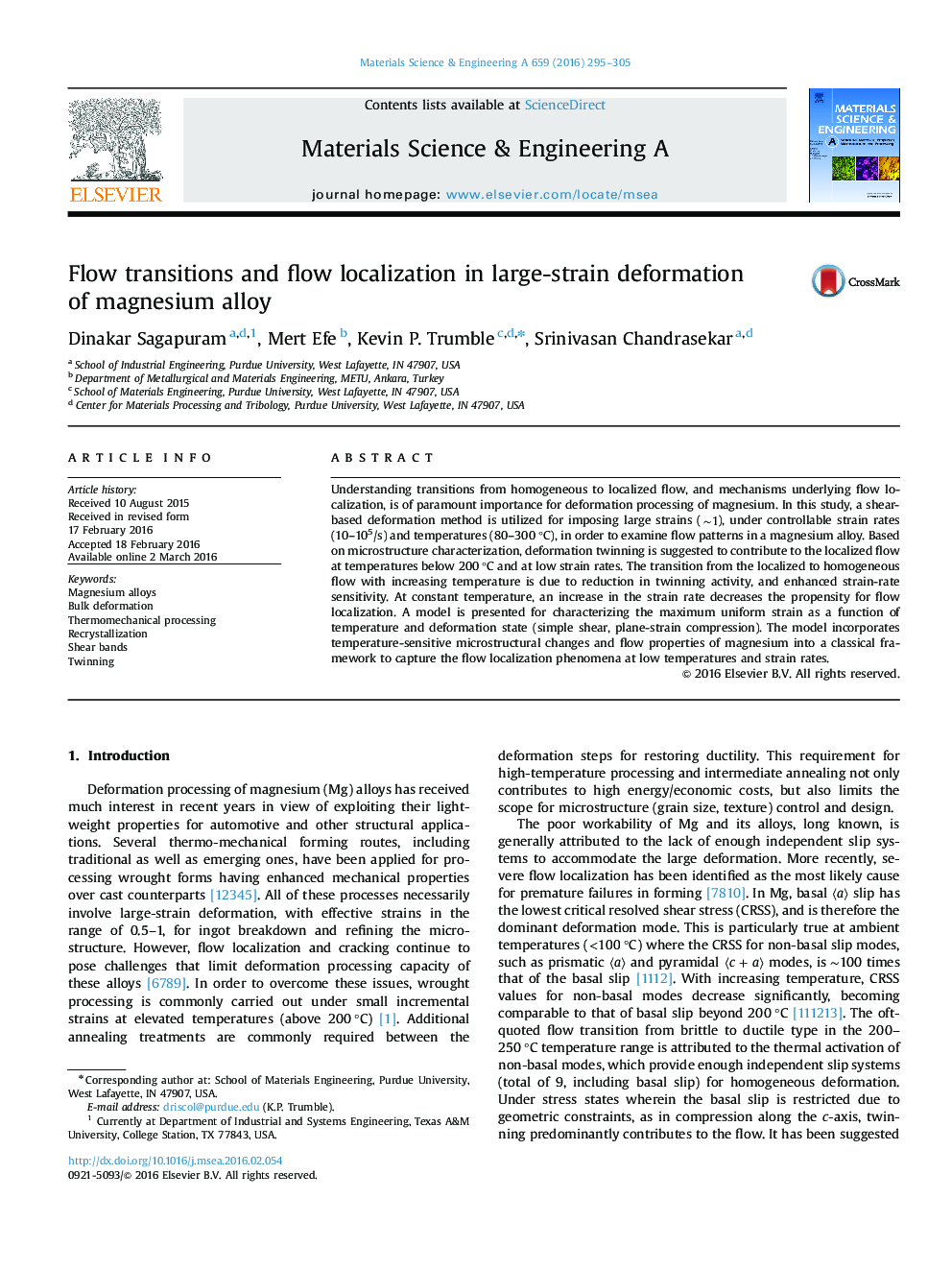| Article ID | Journal | Published Year | Pages | File Type |
|---|---|---|---|---|
| 1573561 | Materials Science and Engineering: A | 2016 | 11 Pages |
Understanding transitions from homogeneous to localized flow, and mechanisms underlying flow localization, is of paramount importance for deformation processing of magnesium. In this study, a shear-based deformation method is utilized for imposing large strains (∼1∼1), under controllable strain rates (10–105/s) and temperatures (80–300 °C), in order to examine flow patterns in a magnesium alloy. Based on microstructure characterization, deformation twinning is suggested to contribute to the localized flow at temperatures below 200 °C and at low strain rates. The transition from the localized to homogeneous flow with increasing temperature is due to reduction in twinning activity, and enhanced strain-rate sensitivity. At constant temperature, an increase in the strain rate decreases the propensity for flow localization. A model is presented for characterizing the maximum uniform strain as a function of temperature and deformation state (simple shear, plane-strain compression). The model incorporates temperature-sensitive microstructural changes and flow properties of magnesium into a classical framework to capture the flow localization phenomena at low temperatures and strain rates.
